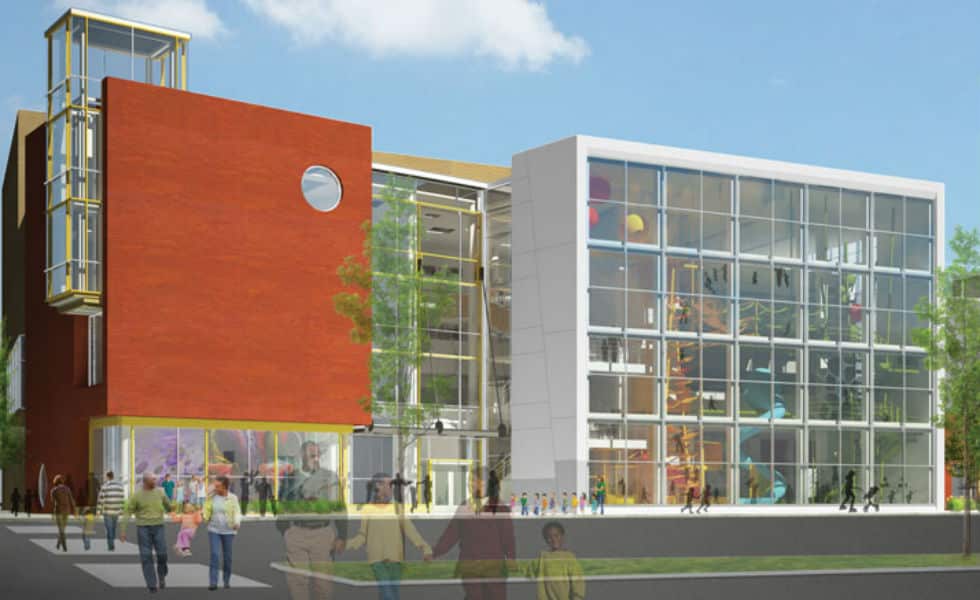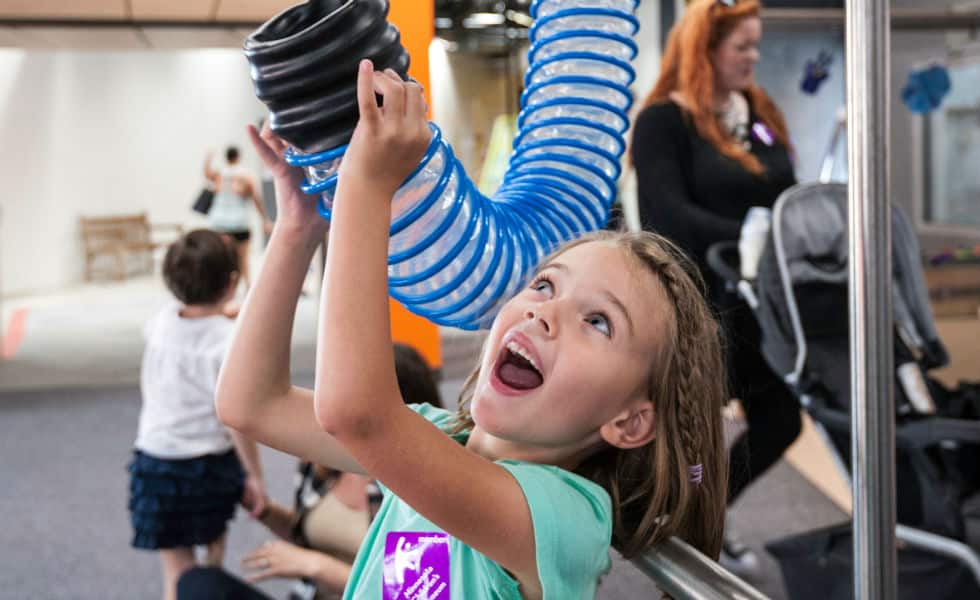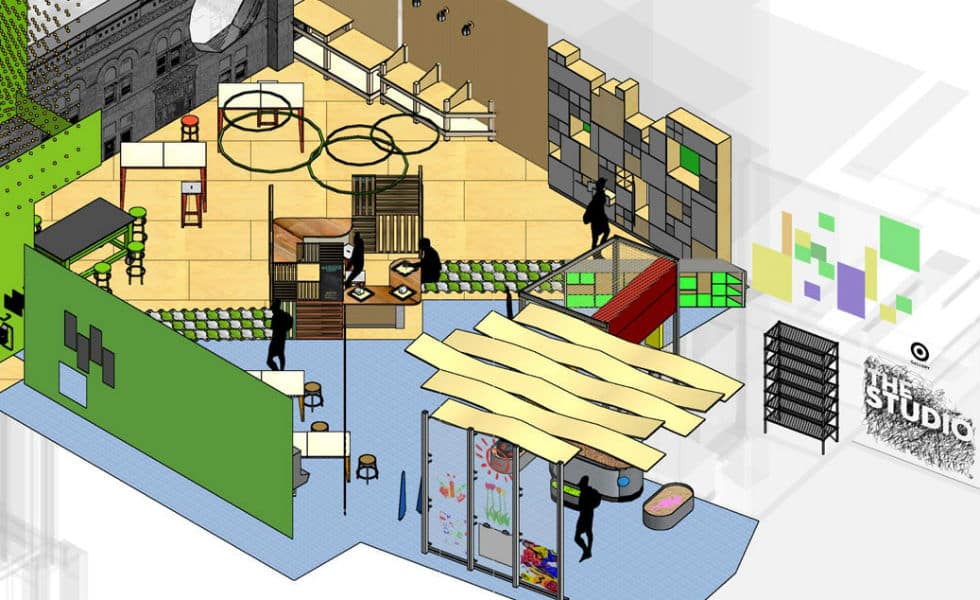DIMENSIONS OF PLAY
New Museum, New Approach to Our Exhibits

Bob Ingrassia, Vice President, External Relations
3 May 2017
At the heart of the newly expanded Minnesota Children’s Museum are 10 new permanent exhibits.
These are places where children (and adults!) get the space and freedom to explore and learn — all while having tons of fun.
The museum’s exhibit designers focused on creating open-ended activities that put kids in charge of their own experience.
Why? Because that’s how children develop the important skills they need to thrive at home, at school and everywhere else.
The museum’s Learning Innovation Division led the design and production of the new exhibits. Barbara Hahn, the museum’s vice president for learning innovation, provides more detail about how the museum tackled this big task.

Q: How did the museum approach creating the new exhibits?
Our goal all along was to unleash the power of play.
We know play is a powerful way to help children develop critical thinking, creativity, confidence and other skills they need to thrive.
When we began re-inventing our exhibits, we decided to flip the usual script. We moved away from viewing exhibits as tools to teach kids about forests or oceans or some other specific subject.
Instead, we started thinking about each exhibit as an opportunity to help children grow foundational skills, such analyzing problems, coming up with ideas and expressing thoughts.
We know that play develops “upstream” skills, which are the tools like creative and critical thinking that children need to do well in school.
The new exhibits are all about open-ended play – activities that put children and their imaginations in the driver’s seat.
We’ve created experiences that give children the time, space and freedom to explore — without feeling they need to do things a certain way or achieve a specific outcome.
This is open-ended play. It’s driven by children. And it’s very powerful.
That’s why you don’t see many directions in our new museum. We’re avoiding telling children exactly what to do or how to do it. We’re not asking kids to get from Point A to Point B.
Instead, we’re putting kids in charge of their own experience.
The museum’s exhibit designers focused on creating open-ended experiences that put kids in charge of their own experience.
Q: What does this look like in the new museum?
In Forces at Play in the 3M Gallery, which opened for a few months before we closed to finish construction, visitors encounter tabletop stations where they build their own air-powered ball launchers. There are hoses and valves and other connectors around, but no directions.
Kids and adults often don’t know what to do at first. So they need to start thinking. What’s my goal? How do I get started? What if my first try doesn’t work? That’s critical thinking in action. That’s learning to innovate.
Another example is The Studio in the Target Gallery. This is a maker space with a changing series of art activities and other projects. Visitors work with real tools – sometimes sewing machines or hammers, saws and drills.
When we did a prototype of this exhibit, we saw that some parents were a little hesitant about putting real tools into a child’s hands. What we saw, though, is that children do a great job – and you can see their confidence shine through.

Q: Why take this approach?
Research shows that play is a powerful teacher. Children learn naturally through play. And the learning that happens through play sticks with a person throughout their life – at home, in school, at work and everywhere else.
Play makes us happier, healthier and more innovative.
Unfortunately, the time children spend playing is declining. One study found that children today spend an average of eight hours less per week playing than children growing up in the 1980s.
In our new exhibits, we’re showcasing the power of open-ended play. We call it “powerful play.” These are activities that get children thinking and moving, pursuing their own interests and, of course, having tons of fun.

Q: What role do parents have in all this?
The most powerful thing parents can do is to give children the time, space and freedom to play.
View play and learning as two sides of the same coin. The fact is you don’t need to “make learning fun.” By definition, play is fun. And by definition, play is learning. So if you want to see children grow and thrive, make play a priority.
Be a great role model and sidekick. Keep a playful mindset. We all benefit from play – not just kids.
Some tips:
- Remind yourself: Children are capable people
- Focus more on the doing, less on the outcome
- Slow down. Take time to notice the little things
- Embrace repetition – give children time to do something again and again
- Avoid imposing one “right way” of doing things
- View a child’s failures (and your own!) as learning opportunities
- Try not to get frustrated – you’ve had more practice than they have!
- Make play a priority – for your children and yourself
Q: Anything to add?
Get ready to play! We’re so excited to welcome families back to our entirely new museum.



